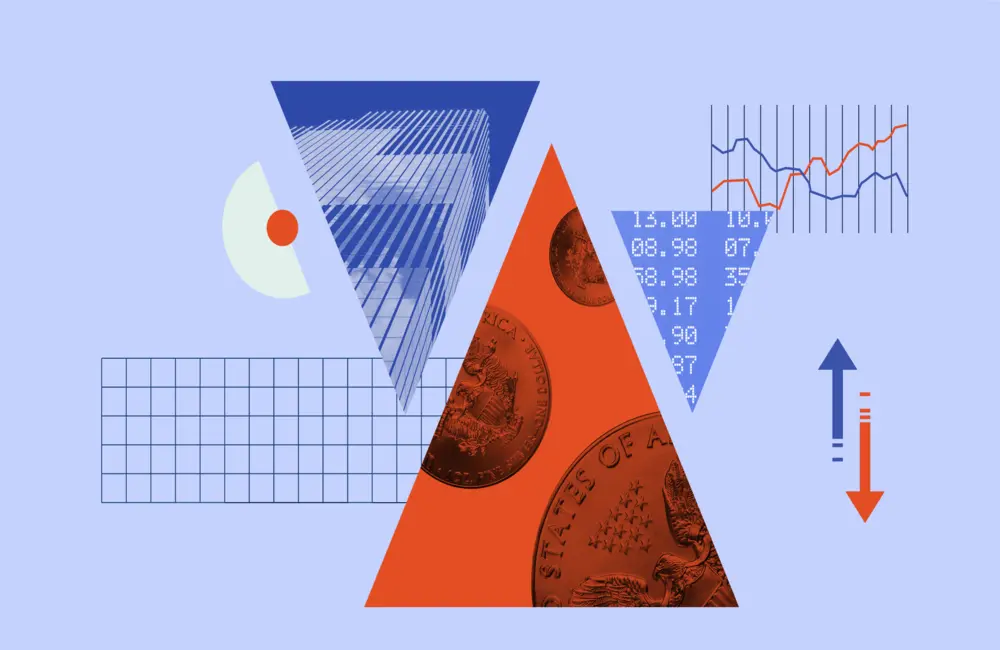The Federal Reserve has a clear message for investors: Get used to interest rates gradually increasing in the months ahead.
As inflation remains stubbornly high and uncertainty lingers about the global economy’s trajectory, stemming from Russia’s invasion of Ukraine, the Fed announced the widely anticipated 25-basis-point increase in the federal-funds rate Wednesday, which had been pegged at zero since the onset of the pandemic-induced recession.
From here, the Fed’s projections show it raising interest rates by 25 basis points seven more times in 2022, and continuing to raise rates into 2023.
There was some debate early on whether the Fed would go for a double rate hike during its March meeting, but earlier in the month, Fed chair Jerome Powell said he favored a single rate hike. As such, a 25-basis-point increase was widely anticipated.
Notably, St. Louis Fed chief James Bullard supported a 50-bp increase. He was the only voter to dissent, and such disagreement is rare at the Fed. Hiking 25 basis points rather than 50 basis points may have been seen as more dovish, but the economic projections (especially the “dot plot” of each member’s interest rate expectations) turned a lot more hawkish and are now relatively aligned with the market's perspective. Also, whereas short- to medium-run projections turned more hawkish, long-run expectations were unchanged. What this means is that this advances only what were already anticipated rate hikes, it doesn’t raise the floor for long-end rates to a new higher baseline.
There were, however, some language updates added in the Fed’s press release. It eliminated language referencing the coronavirus pandemic and vaccinations, inserted a paragraph emphasizing the uncertainty and economic threats posed by Russia’s invasion of Ukraine, and acknowledged “broader price pressures” among the causes of inflation for the first time. We think the last item is particularly important because it lays out in black and white that the Fed is increasingly concerned with persistently high levels of inflation. This is quite a departure from its former characterization of inflation as “transitory.”
In a related move, the Fed also added language around expecting “inflation to return to its 2% objective and the labor market to remain strong” while it tightens monetary policy. It if wasn’t clear before, the Fed is on a mission to first and foremost combat inflation. Also, the addition of explicit forward guidance is significant the Fed sees this as yet another tool to keep inflation expectations anchored.
The Fed issued its updated economic projections, which had some noticeable changes. The steep climb down in terms of hiking expectations being the most important update from our point of view. The median federal-funds rate forecast is now 1.9% for 2022, compared with 0.9%, 2.8% for 2023, up from 1.6%, and 2.8% for 2024, up from 2.1%. That is a huge turnaround in just a few months. This means one rate hike at each meeting for most 2022 and about one hike at every other meeting in 2023. Estimates for growth in real gross domestic product were also reduced for 2022, but estimates for inflation were revised up for 2022-24. In fact, inflation is projected by the Fed to stay above 2% through 2024!
Indeed, CME futures imply that the bond market expects the most probable outcome to be that rates fall somewhere in a range from 175 basis points to 225 basis points, or seven to eight rate-hikes, by the end of 2022, consistent with the Fed’s new dot-plot. As this plays out, the Fed will have to walk a fine line of removing accommodative monetary support as economic growth starts to cool but a hawkish bent is a good change and the consumer is still in an excellent position overall with excess savings.
We will also caution investors that “accommodative policy” should be considered against the backdrop of today’s inflation. Policy is still highly accommodative, given inflation far above today’s interest rates. Accordingly, we think the risks of a recession this year under a Fed that’s raising rates are quite low. But we see no reason to stop the Fed from proceeding with a healthy first set of rate hikes for now, as we believe the economy can absorb them.
On balance-sheet reduction, the Fed added new language that suggests it is anticipating it will soon begin to reduce the size of its balance sheet at an upcoming meeting. We had anticipated a forward signal on the prospective balance-sheet-extraction operation, in advance of the announcement of those reductions. The stage is now set and we would not be surprised by an explicit announcement around reductions at the next meeting as soon as May.























